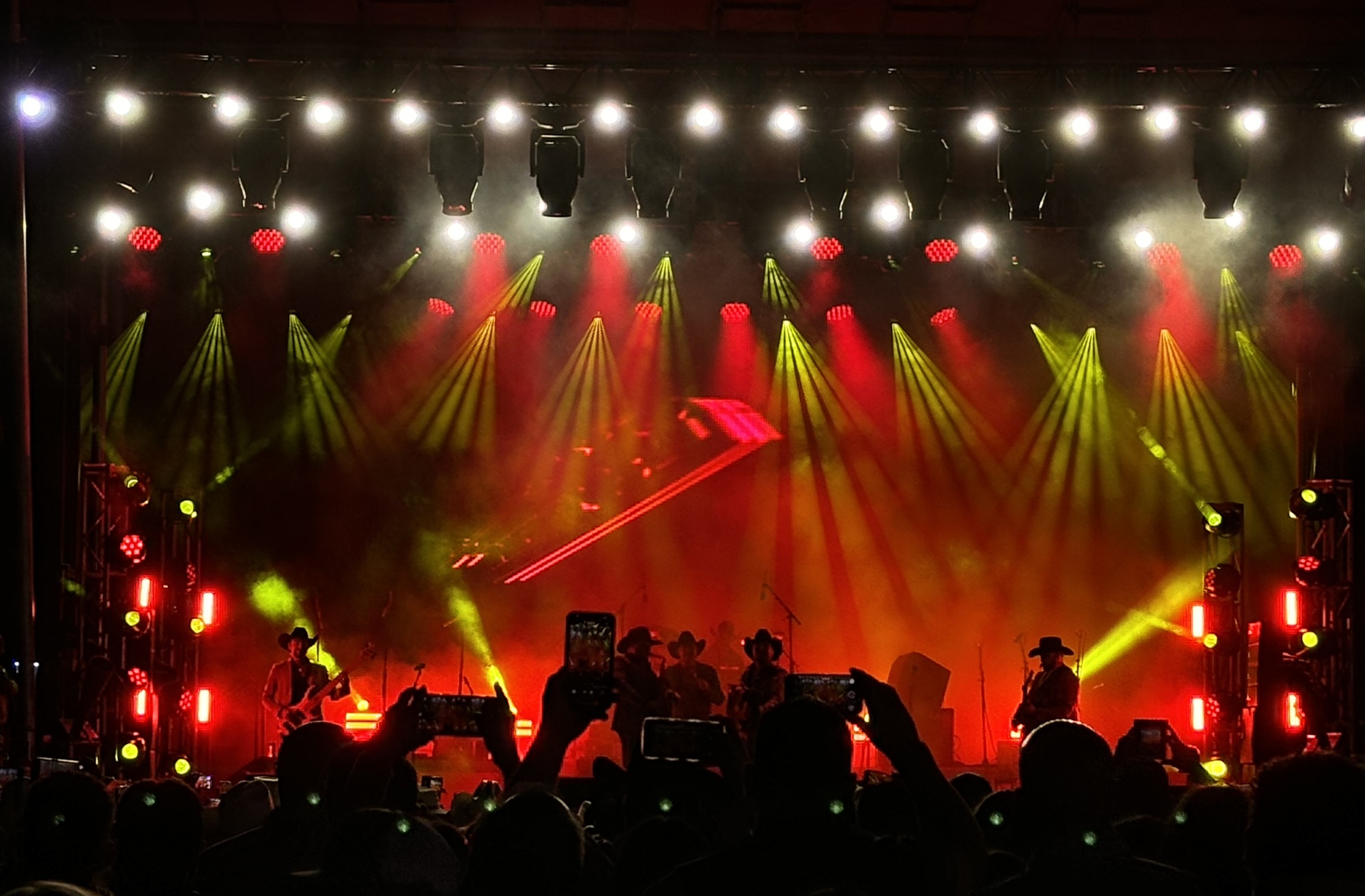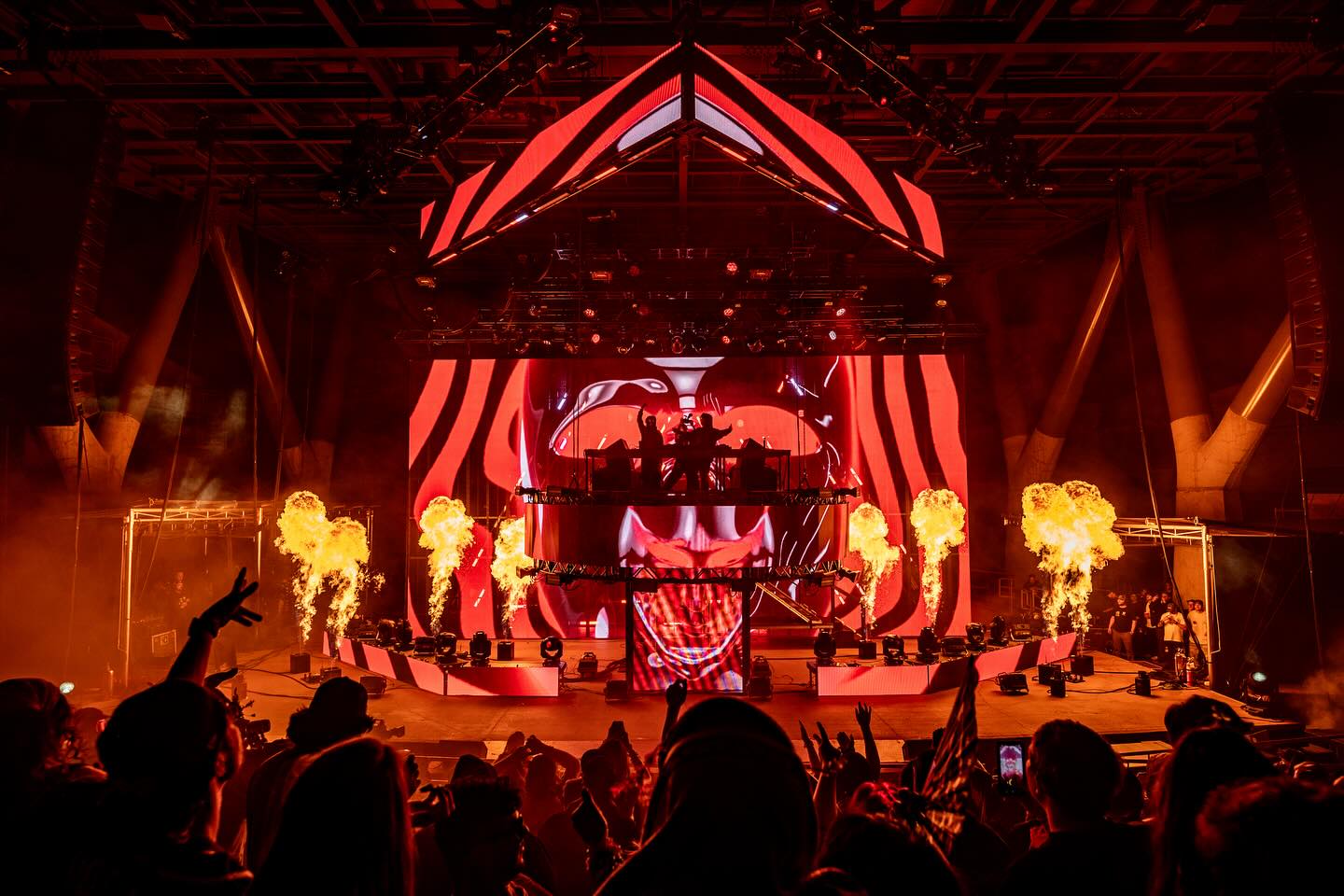SUN VALLEY, CA – LD Jason Carroll is one of the early adopters of the impression Spot One LED. He tested them out on a show with Weezer and spec’d them soon after on St. Vincent’s tour. GLP launched the impression Spot One LED head earlier this year.
More details from GLP (http://www.glp.de):
GLP Spot Ones: Variations on a Beam for St. Vincent
One of the fastest lighting designers out of the blocks when GLP launched its groundbreaking impression Spot One LED head earlier this year was Jason Carroll.
Having had the opportunity to test drive the fixture at a show with Weezer earlier this summer, he has taken five of the fixtures out on tour this fall with St. Vincent (the name under which Annie Clark performs). Playing up to mostly sold-out, 1200-capacity venues in the US, in support of the latest album, Strange Mercy, the tour then relocated to the UK and Europe, where Carroll has been able to source the same inventory — and add in some GLP impression 120RZ zooms for as well.
The Spot One harnesses the output of multiple LED sources which is then forced through the optical system of a conventional spot chassis to create both an even beam for RGB color mixing and a focusable area for gobo projections.
When the Weezer tour rocked up to an outdoor amphitheatre during the OC Fair in California this summer, the venue happened to be beta-testing four of the new fixtures; the house LD willingly let Carroll add them to his show, (which he did by placing them on upturned road cases behind the band). “I was immediately impressed that they seemed brighter than the 700W discharge fixture hanging above,” he said. “They were fast moving, which worked well with an energetic band like Weezer. I also liked the sharp edge focus, and that all 14 gobos could rotate.”
Art Director Deborah Johnson chose Spot Ones to complement the house rigs, at the same time creating a lighting storyboard for each song, and choosing custom gobos for the Spot Ones and discharge fixtures.
Having worked with the band since 2009, Carroll explained, “Previously I used a multitude of floor based LED par can fixtures to create a ‘technicolor’ stage look. I also had three white rectangle Spandex stretchy shapes behind the band, to throw color onto and intentionally cast tall shadows.
“But for the current tour, Annie wanted the lighting to be drastically different, with no backdrop pieces and a color shift to mostly white light, which meant that we needed moving lights instead of LED par cans,” he added.
Thus the touring lighting package became entirely floor based, with many of the moving lights including the Spot Ones, on tipped up road cases, giving Carroll the flexibility “to do some down positions on the band, and some up positions over the band members’ heads.” Four conventional Profile spots (stage left and right) — replaced in Europe by the GLP 120RZ zooms — along with two strobes on the midstage floor, and six generics (as foot lights for the four piece band) completed a simple set-up.
“The floor package programming was designed to look amazing even without any house systems,” noted Carroll. The majority of this programming had been carried out in New York by Ben Stanton and his assistant, Jon Goldman, with Carroll joining the team to provide another layer of input to the process.
While the lighting for the US tour was provided by New York-based See Factor Industries for the European leg, Colour Sound Experiment took over, having recently added a large number of Spot Ones to their own inventory. As for the RZ120s, there were several reasons for the switch, Carroll noted, including easier portability, smaller size, lower power consumption, the flexibility to vary between both narrow beams and wide beams, and overall reliability as an LED fixture.
The long tour has given Carroll plenty of opportunity to assess the merits and attributes of GLP’s newest baby — in addition to the effect he can generate from the twin rotating gobo wheels (and three-facet prism effect). “The Spot Ones operate on a 400W RGB chipset, and are incredibly bright for that rating — almost as bright as the 1200W discharge washes that I have them running up against,” he observes. “The colors are vibrant and I doubt that the untrained eye would notice that I was using two different types of spot fixtures. We received specific comments on how good red looks on the Spot One.”
The beam variations, from wide to a narrow iris beam, and either a soft focus or sharp edge beam, were further plus points, he noted, as the St. Vincent lighting frequently uses the narrow beam feature.
Weight advantages played in as well. “This makes set-up and breakdown fast, which is crucial for a touring lighting package. On top of that the Spot Ones generate almost no heat, so it feels like their internal components will last a lot longer than a typical moving light. As they are LEDs, I don’t have to ever worry about a lamp blowing out during a show.”



